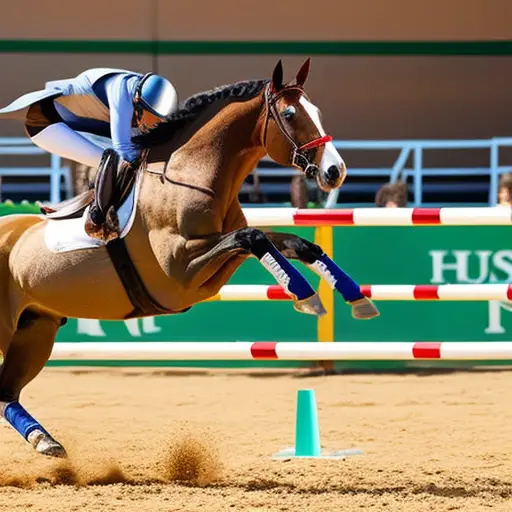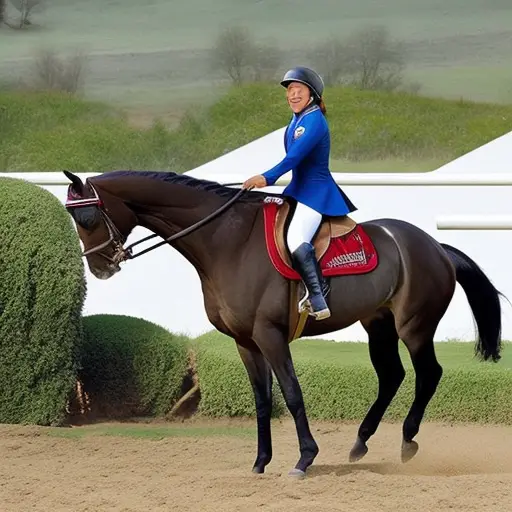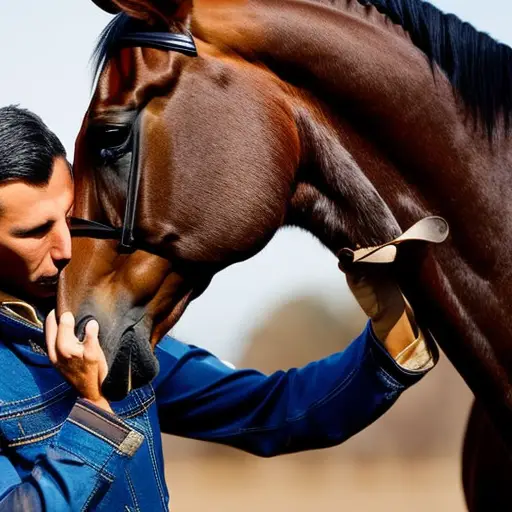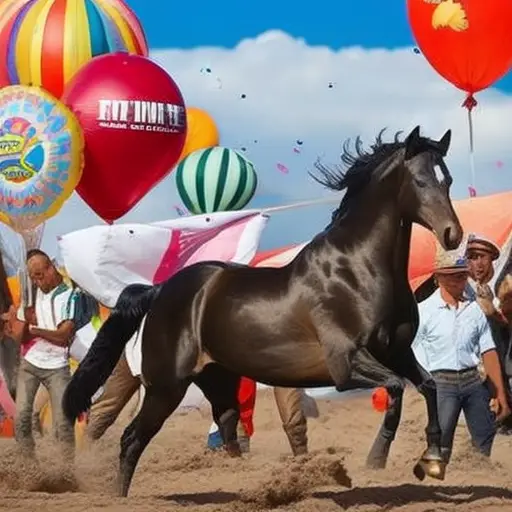Understanding the Equine Learning Process: A Guide
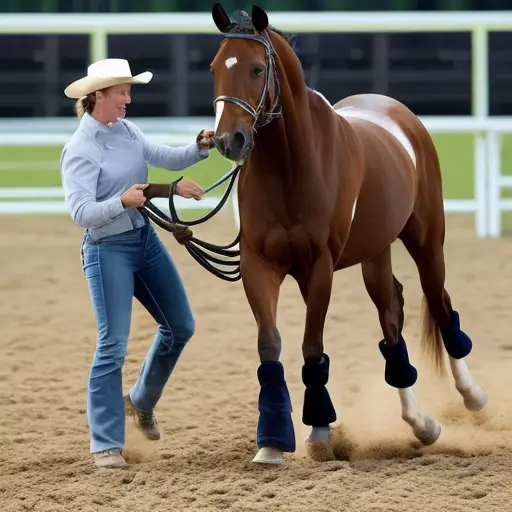
Imagine stepping into the fascinating world of equine learning, where every interaction with a horse holds the potential for growth and understanding.
In this guide, we will delve into the intricacies of the equine learning process, uncovering the different learning styles in horses and the factors that influence their ability to absorb and retain information.
With effective communication and reinforcement techniques, you will discover how to optimize your horse’s learning experience.
Get ready to embark on a journey of knowledge and connection with these magnificent creatures.
The Basics of Equine Learning
You should start by understanding the basics of equine learning. Equine learning is a complex process that involves a learning curve and behavioral conditioning. Understanding how horses learn can greatly enhance your ability to train and work with them effectively.
The learning curve in equine learning refers to the rate at which horses acquire new skills and behaviors. Just like humans, horses have different learning styles and abilities. Some horses may pick up new tasks quickly, while others may require more time and repetition. It’s important to be patient and understanding during the learning process, allowing the horse to progress at its own pace.
Behavioral conditioning is another key aspect of equine learning. This process involves using positive reinforcement or negative reinforcement to shape desired behaviors. Positive reinforcement involves rewarding the horse for exhibiting the desired behavior, such as giving a treat or praise. Negative reinforcement, on the other hand, involves removing an aversive stimulus when the horse performs the desired behavior. Both methods can be effective in training horses and should be used in a consistent and fair manner.
Different Learning Styles in Horses
Horses have both visual and auditory learning styles, and they can benefit from a combination of both. Understanding the different learning styles in horses is crucial for effective training and communication.
Visual learning in horses involves their ability to process and interpret visual stimuli. Horses rely on their keen sense of sight to observe their surroundings and learn from their environment. They can pick up visual cues and patterns, making them responsive to visual aids such as body language, gestures, and visual cues from their trainers.
On the other hand, auditory learning refers to the horse’s ability to learn through sound and auditory cues. Horses have excellent hearing, and they can discern different tones, pitches, and frequencies. They can associate specific sounds with certain actions or behaviors, making auditory cues an effective tool for training and communication.
Combining visual and auditory learning styles can enhance the horse’s learning experience. By using a combination of visual and auditory cues, trainers can reinforce and clarify their instructions, making it easier for horses to understand and respond. This approach takes advantage of horses’ sensory perception and maximizes their ability to process information.
Understanding horses’ different learning styles can help trainers tailor their training methods to suit individual horses. By leveraging their visual and auditory capabilities, trainers can improve the horse’s behavioral responses and accelerate the learning process.
Factors Affecting Equine Learning
When it comes to equine learning, understanding the influence of both the environment and the trainer is essential.
Environmental influences play a significant role in the learning process of horses. The environment in which horses are trained can greatly impact their ability to learn and retain information. Factors such as noise level, distractions, and the presence of other animals can all affect a horse’s focus and ability to learn. Additionally, the physical environment, such as the size and layout of the training area, can also impact a horse’s learning experience.
Trust is another key factor in the equine learning process. Horses are highly sensitive animals and rely on trust to feel safe and comfortable. When a horse trusts its trainer, it’s more likely to be open to learning and trying new things. Building trust takes time and patience, but it’s crucial for successful equine learning.
Effective Communication and Reinforcement Techniques
To ensure successful equine learning, it’s important to establish clear and consistent communication, as well as implement effective reinforcement techniques. Positive reinforcement and body language play crucial roles in achieving this.
Positive reinforcement involves rewarding desired behavior to encourage its repetition. In the equine learning process, this can be done by offering treats, praise, or even a gentle pat on the neck. Horses respond well to positive reinforcement as it creates a positive association with the behavior being reinforced. This strengthens the connection between the desired behavior and the reward, making the horse more likely to repeat the behavior in the future.
In addition to positive reinforcement, body language is another powerful tool for effective communication with horses. Horses are incredibly perceptive of human body language and can pick up on subtle cues. By using consistent and clear body language, you can effectively communicate your intentions to the horse. For example, using open body posture and relaxed movements can convey a sense of calmness and trust. Conversely, tense or erratic body movements may signal fear or uncertainty, which can confuse or frighten the horse.
Training Methods for Optimal Equine Learning
To achieve optimal equine learning, you can employ a variety of training methods that cater to the individual needs and learning style of your horse. Positive reinforcement is a highly effective technique that rewards desired behaviors with treats, praise, or petting, encouraging the horse to repeat those behaviors. Clicker training, a form of positive reinforcement, involves using a clicker to mark the desired behavior, followed by a reward. This method helps horses associate the clicker sound with positive outcomes, facilitating their learning process.
Other training methods include:
-
Natural horsemanship: This approach emphasizes understanding and working with the horse’s natural instincts and behaviors, focusing on building a partnership based on trust and communication.
-
Desensitization: By gradually exposing the horse to various stimuli, such as loud noises or unfamiliar objects, in a controlled and positive manner, you can help them overcome fear and develop confidence.
-
Target training: This method involves teaching the horse to touch or follow a target, such as a stick or a cone, which can be used to guide them through different exercises and maneuvers.
Frequently Asked Questions
Can Horses Learn From Each Other?
Yes, horses can learn from each other through observational learning and social facilitation. They observe and imitate behaviors of other horses, which can influence their own learning and behavior.
What Are Some Common Mistakes to Avoid When Communicating With a Horse?
When communicating with a horse, common mistakes to avoid include a lack of clarity in your cues and being inconsistent. Remember the adage "clear as mud." Positive reinforcement training benefits horses by promoting understanding and trust.
How Long Does It Usually Take for a Horse to Learn a New Skill or Behavior?
Factors affecting the learning time for horses include the complexity of the skill, the horse’s previous training, and the individual horse’s temperament. To track progress, observe the horse’s response and adjust training accordingly.
Are There Any Specific Factors That Can Hinder a Horse’s Learning Process?
Factors like inconsistent training, fear, and physical discomfort can hinder a horse’s learning process. To overcome these obstacles, establish a consistent training routine, use positive reinforcement, and ensure the horse’s physical and emotional well-being.
Are There Any Alternative Training Methods That Can Be Effective for Horses With Specific Learning Challenges?
When faced with specific learning challenges, horses can benefit from alternative training methods. By adapting techniques to suit their individual needs and utilizing methods tailored to their breed, you can effectively help them overcome obstacles and excel in their learning journey.
Conclusion
Now that you have delved into the intricacies of the equine learning process, you can confidently navigate the world of horse training.
By understanding the basics of equine learning, recognizing different learning styles in horses, and considering the factors that affect their learning, you can tailor your communication and reinforcement techniques accordingly.
Remember, knowledge is power, and with the right tools and methods, you can unlock the full potential of your equine partner and ride off into the sunset of success.

Join Davina Gardea on a journey into the world of horsemanship. With a deep passion for horses and years of experience, Davina shares invaluable insights and techniques to enhance your connection with these magnificent creatures. Explore the art of riding, training, and nurturing a profound bond with horses at diedgone.com.

